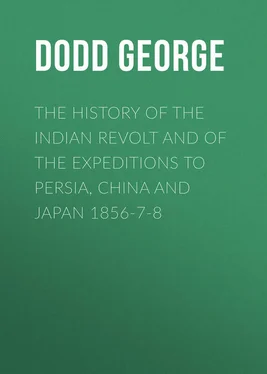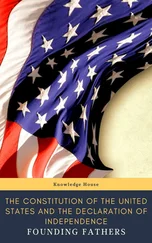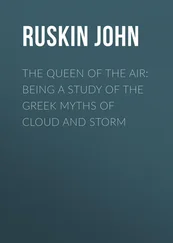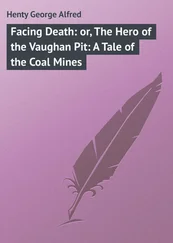George Dodd - The History of the Indian Revolt and of the Expeditions to Persia, China and Japan 1856-7-8
Здесь есть возможность читать онлайн «George Dodd - The History of the Indian Revolt and of the Expeditions to Persia, China and Japan 1856-7-8» — ознакомительный отрывок электронной книги совершенно бесплатно, а после прочтения отрывка купить полную версию. В некоторых случаях можно слушать аудио, скачать через торрент в формате fb2 и присутствует краткое содержание. Жанр: foreign_antique, foreign_prose, на английском языке. Описание произведения, (предисловие) а так же отзывы посетителей доступны на портале библиотеки ЛибКат.
- Название:The History of the Indian Revolt and of the Expeditions to Persia, China and Japan 1856-7-8
- Автор:
- Жанр:
- Год:неизвестен
- ISBN:нет данных
- Рейтинг книги:3 / 5. Голосов: 1
-
Избранное:Добавить в избранное
- Отзывы:
-
Ваша оценка:
- 60
- 1
- 2
- 3
- 4
- 5
The History of the Indian Revolt and of the Expeditions to Persia, China and Japan 1856-7-8: краткое содержание, описание и аннотация
Предлагаем к чтению аннотацию, описание, краткое содержание или предисловие (зависит от того, что написал сам автор книги «The History of the Indian Revolt and of the Expeditions to Persia, China and Japan 1856-7-8»). Если вы не нашли необходимую информацию о книге — напишите в комментариях, мы постараемся отыскать её.
The History of the Indian Revolt and of the Expeditions to Persia, China and Japan 1856-7-8 — читать онлайн ознакомительный отрывок
Ниже представлен текст книги, разбитый по страницам. Система сохранения места последней прочитанной страницы, позволяет с удобством читать онлайн бесплатно книгу «The History of the Indian Revolt and of the Expeditions to Persia, China and Japan 1856-7-8», без необходимости каждый раз заново искать на чём Вы остановились. Поставьте закладку, и сможете в любой момент перейти на страницу, на которой закончили чтение.
Интервал:
Закладка:
Arrangements were immediately made for sending this faithful, or apparently faithful, regiment to districts where it might render useful service. As there was an insufficient supply of steamers available, the government resolved to send the regiment the whole distance from Barrackpore to Allahabad by country boats on the Ganges – an excessively protracted voyage of eight hundred miles, as the reader is already aware. When the men were about to start, they expressed to Colonel Kennedy a wish that the new Enfield rifle should be served out to them. They declared themselves entirely satisfied with the explanations concerning the cartridges; and they added, in a written petition to which the names of twelve subadars and jemadars were appended: ‘We have thought over the subject; and as we are now going up the country, we beg that the new rifles, about which there has been so much said in the army and all over the country, may be served out to us. By using them in its service, we hope to prove beyond a doubt our fidelity to government; and we will explain to all we meet that there is nothing objectionable in them: otherwise, why should we have taken them? Are we not as careful of our caste and religion as any of them?’ All the native officers of this regiment, so far as can be judged from the names appended to the petition, were Hindoos. When the 70th started to the northwest, every effort was made by the government to set the unhappy cartridge troubles wholly at rest, and to enlist the services of the sepoys of that regiment in diffusing among their compatriots a knowledge of the real facts. Orders, instructions, memoranda, circulars were brought into requisition to explain – that the new rifle fired nine hundred yards, against the two hundred yards’ range of the old musket; that it was lighter than the musket; that its great range and its lightness caused it to be introduced into the Anglo-Indian army; that the new rifle-bullets, requiring machinery for their manufacture, were sent out from England in a finished state; that a few cartridges for those bullets were in the first instance sent out ready prepared with a lubricant, but that the Indian government resolved not to issue them to the native troops, in deference to their religious scruples; that the cartridge-paper had long been, and would continue to be, made at Serampore, without any admixture of grease; that every native regiment would be allowed to lubricate its cartridges with any suitable substance preferred by the men; and that the practice of biting off the ends of the cartridges might be wholly dispensed with. In short, everything that could be done, was done, to remove a suspicion unsound in its origin, and pernicious in its continuance.
Another regiment, the 34th B. N. I., adopted nearly the same course as the 70th. The larger portion of this regiment, it will be remembered, was at Barrackpore at the time of the cartridge troubles; but the rest was at Chittagong. The sepoys in this last-named detachment came forward with a very pointed declaration of their loyalty. Captain Dewaal, in command of that detachment, assembled his men one day towards the end of April, and told them how shamefully their companions had acted at Barrackpore, and how much disgrace had thereby been brought upon the regiment. Two days afterwards, an address or petition was presented to him, signed by the subadars and havildars in the names of all; in which regret was expressed for the conduct of the mutineers at Barrackpore. ‘By a careful performance,’ the petitioners said, ‘of our duties, we have gained a reputation for fidelity to government. These men have deprived us of it. We well know that the government will not interfere with our religion. We hope that the government will consider us as faithful as ever; and we pray that this petition may be sent to the governor-general, in order that his lordship may know the state of our feelings.’ Three or four weeks later, when this remnant of the regiment had been removed to Barrackpore, the men made another profession of their loyalty. In a petition to their commander, they said: ‘Some evil-disposed men of the regiment have deprived us of the reputation for loyalty which we have ever held. They have received the fruits of their misconduct by being disbanded. We that remain are willing to serve against the mutineers at Delhi, and are anxious to recover our lost name. We pray that the government will ever regard us as faithful soldiers.’
Two further examples of a similar kind were presented, one by the 43d and another by the 63d regiments B. N. I. About the end of May, the commandant of the first of these two regiments at Barrackpore, received a petition signed by the native commissioned officers, praying that the regiment might be allowed to proceed against the mutineers at Delhi – a wish that had been previously expressed to him on parade. Nearly at the same time Captain Pester, commanding the 63d at Berhampore, received a petition signed by the whole of the native officers on parade, intended to be forwarded to the governor-general; and, this petition being afterwards read in the native language to the whole regiment, the sepoys unanimously expressed their concurrence in the sentiments it conveyed. The petitioners said: ‘We have this day heard on parade the order issued by your lordship consequent on the petition forwarded by the native officers and sepoys of the 70th regiment of native infantry. On hearing the same, we were greatly rejoiced; for, in truth, all the men of that regiment have behaved as becomes loyal and faithful soldiers, and your lordship has in every way been pleased with them. Now do we also all petition that we may be numbered among the good and trustworthy soldiers of the state, as we have always been; and we are prepared and ready, with heart and hand, to go wherever, and against whomsoever you may please to send us, should it even be against our own kinsmen.’
The governor-general could do no other than receive these demonstrations. Whether he acceded to the request for permission to ‘march against the mutineers,’ depended necessarily on the military arrangements of the time; whether he fully believed the protestations, may perhaps be doubted, although no disbelief was expressed.
Happily for Bengal, it was affected by few of the disturbances that agitated the more western provinces. Consulting a map, we shall see that the banks of the Hoogly and the Lower Ganges are thickly studded with towns; and it may here at once be stated, that the peaceful industry of these towns was very little interrupted during the month of May. Tracing upwards from Calcutta, we meet with Dumdum, Barrackpore, and Serampore, the first two of which experienced a lull after the storm. Serampore was once the Alsatia of Calcutta, a place of refuge for schemers, insolvent debtors, and reckless adventurers; but the Company bought it from the Danish government, to which it had belonged, and the Baptist missionaries helped to civilise it; it is now a clean cheerful town, with a large paper-manufactory. Higher up is the once flourishing but now decayed town of Chandernagore, one of the few places in India still belonging to the French. Near this is Chinsura, held by the Dutch until 1825, but now a flourishing settlement belonging to the Company, provided with an extensive military depôt for Europeans, with a magnificent hospital and barracks. Then we come to Hoogly, a town bearing the same name as the river on whose banks it stands: a busy place, with many civil and educational establishments. Further north is Plassy, the place near which Clive fought the great battle that virtually gave India to the British. Beyond this is Berhampore, which, very refractory in March and April, had become tractable and obedient in May. Next we meet with Moorshedabad and its suburb Cossimbazar. Once the capital of Bengal when a Mohammedan dominion, Moorshedabad contained a splendid palace belonging to the nawab; but though no longer possessed of this kind of greatness, the city is commercially very important, as standing on the great highway, or rather water-way, from Calcutta to the northwest. All the places above named are situated either on the Hoogly or on the Bhagruttee, those two rivers combining to form the most convenient outlet from the Ganges to the sea.
Читать дальшеИнтервал:
Закладка:
Похожие книги на «The History of the Indian Revolt and of the Expeditions to Persia, China and Japan 1856-7-8»
Представляем Вашему вниманию похожие книги на «The History of the Indian Revolt and of the Expeditions to Persia, China and Japan 1856-7-8» списком для выбора. Мы отобрали схожую по названию и смыслу литературу в надежде предоставить читателям больше вариантов отыскать новые, интересные, ещё непрочитанные произведения.
Обсуждение, отзывы о книге «The History of the Indian Revolt and of the Expeditions to Persia, China and Japan 1856-7-8» и просто собственные мнения читателей. Оставьте ваши комментарии, напишите, что Вы думаете о произведении, его смысле или главных героях. Укажите что конкретно понравилось, а что нет, и почему Вы так считаете.












